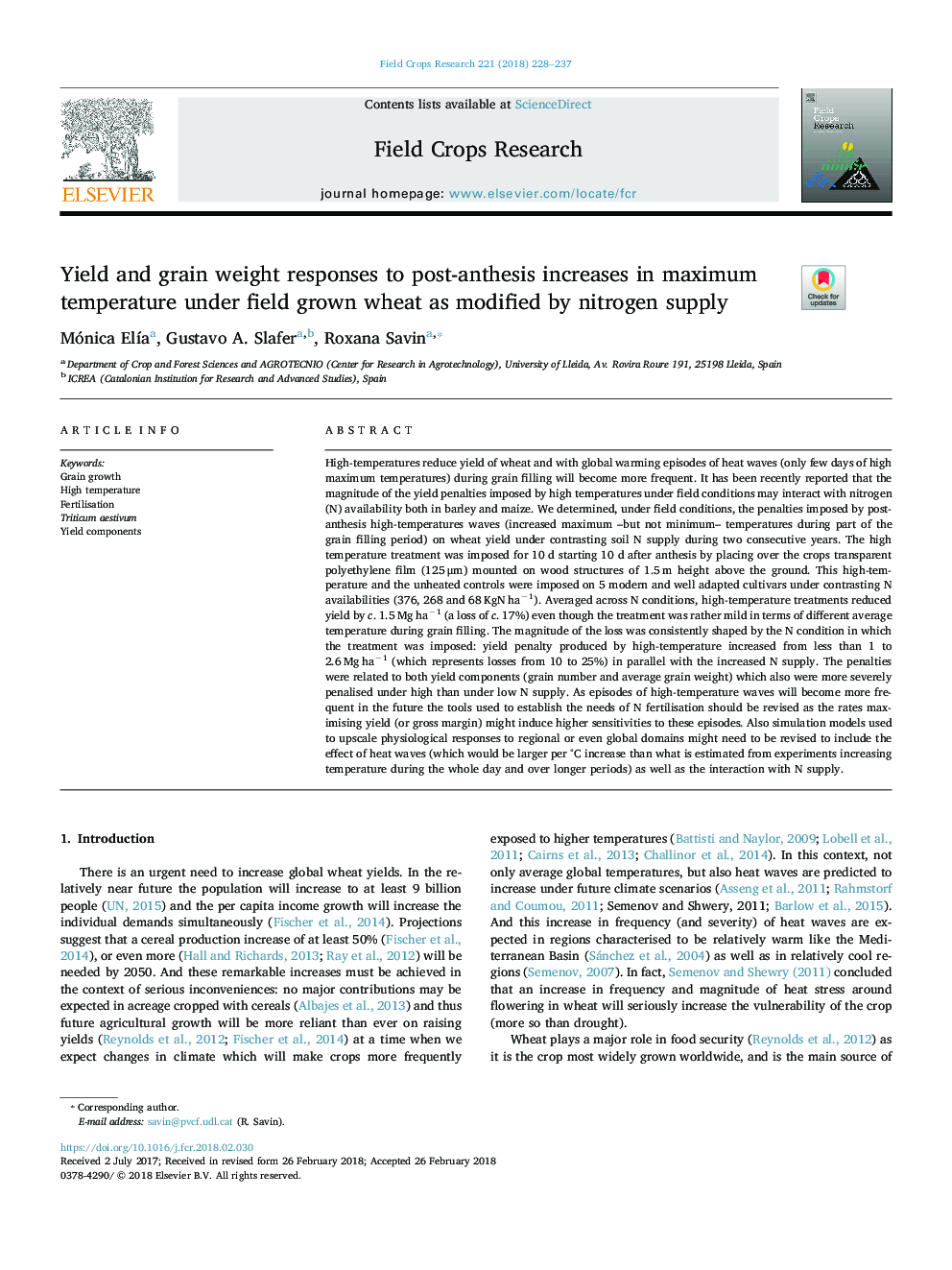| Article ID | Journal | Published Year | Pages | File Type |
|---|---|---|---|---|
| 8879260 | Field Crops Research | 2018 | 10 Pages |
Abstract
High-temperatures reduce yield of wheat and with global warming episodes of heat waves (only few days of high maximum temperatures) during grain filling will become more frequent. It has been recently reported that the magnitude of the yield penalties imposed by high temperatures under field conditions may interact with nitrogen (N) availability both in barley and maize. We determined, under field conditions, the penalties imposed by post-anthesis high-temperatures waves (increased maximum -but not minimum- temperatures during part of the grain filling period) on wheat yield under contrasting soil N supply during two consecutive years. The high temperature treatment was imposed for 10 d starting 10 d after anthesis by placing over the crops transparent polyethylene film (125â¯Î¼m) mounted on wood structures of 1.5â¯m height above the ground. This high-temperature and the unheated controls were imposed on 5 modern and well adapted cultivars under contrasting N availabilities (376, 268 and 68â¯KgNâ¯haâ1). Averaged across N conditions, high-temperature treatments reduced yield by c. 1.5â¯Mgâ¯haâ1 (a loss of c. 17%) even though the treatment was rather mild in terms of different average temperature during grain filling. The magnitude of the loss was consistently shaped by the N condition in which the treatment was imposed: yield penalty produced by high-temperature increased from less than 1 to 2.6â¯Mgâ¯haâ1 (which represents losses from 10 to 25%) in parallel with the increased N supply. The penalties were related to both yield components (grain number and average grain weight) which also were more severely penalised under high than under low N supply. As episodes of high-temperature waves will become more frequent in the future the tools used to establish the needs of N fertilisation should be revised as the rates maximising yield (or gross margin) might induce higher sensitivities to these episodes. Also simulation models used to upscale physiological responses to regional or even global domains might need to be revised to include the effect of heat waves (which would be larger per °C increase than what is estimated from experiments increasing temperature during the whole day and over longer periods) as well as the interaction with N supply.
Related Topics
Life Sciences
Agricultural and Biological Sciences
Agronomy and Crop Science
Authors
Mónica ElÃa, Gustavo A. Slafer, Roxana Savin,
